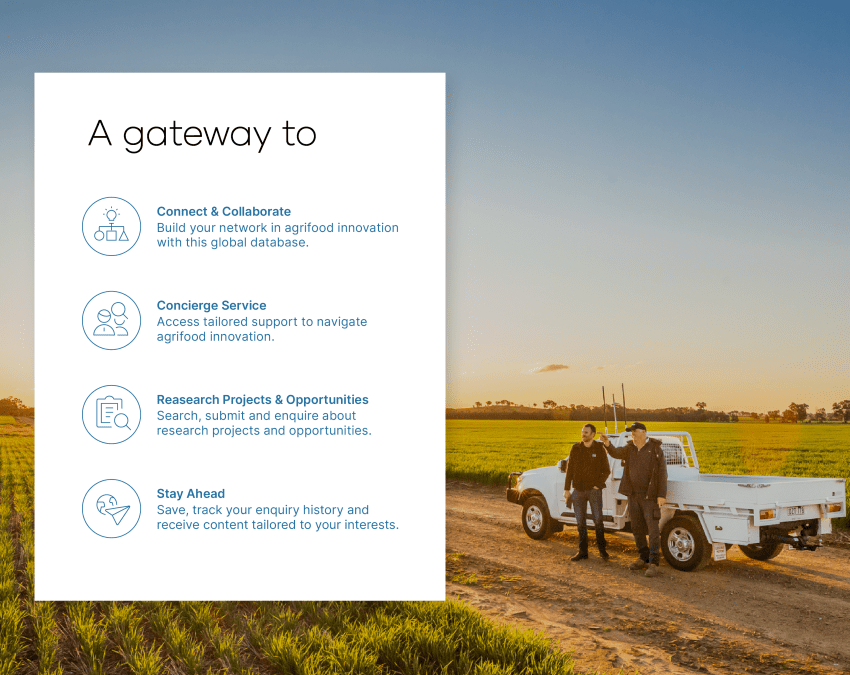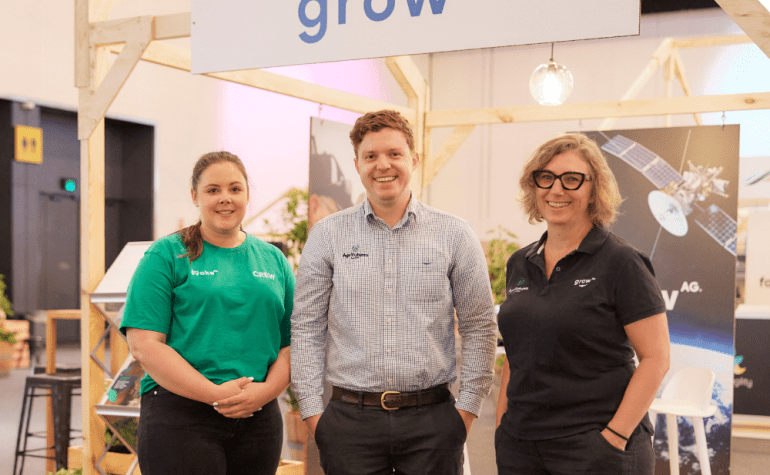
Gaining traction on growᴬᴳ⋅: The secret sauce to a great opportunity
Raising funds for your startups – no matter what stage you are at – is no easy task. So, what tactics should you employ to attract the right investors to your funding round, or prospective strategic partners? growᴬᴳ⋅ contributor Judy Kennedy sat down with David Lord, Manager Engagement, growᴬᴳ⋅ to explore essential considerations for startups when crafting an investment opportunity on growᴬᴳ⋅.

- Share via Facebook: Gaining traction on growᴬᴳ⋅: The secret sauce to a great opportunity
- Share via LinkedIn: Gaining traction on growᴬᴳ⋅: The secret sauce to a great opportunity
- Share via Twitter: Gaining traction on growᴬᴳ⋅: The secret sauce to a great opportunity
- Share via E-mail: Gaining traction on growᴬᴳ⋅: The secret sauce to a great opportunity
David has been working with AgriFutures growAG. since the platform launched in April 2021. Alongside a small team, David has played a pivotal role in fostering the growth of the platform, which currently has over 100 commercialisation, research, and investment opportunities listed. He works with founders and business development to identify potential investment and strategic partnership opportunities, supports the development of opportunities, and facilitates introductions across the broader agrifood innovation ecosystem.
Judy Kenndy: What type of investors and potential strategic partners access growAG. and what are they usually looking for?
David Lord: growAG. gives you access to a diverse community of early-stage investors, corporate innovation scouts, funding bodies, early adopter farmers and the research community globally. Users are actively looking for new technologies to solve problems in their business or on their farm, or to back with money to create impact and returns. If you want to pique their interest, you need to include a nuanced narrative and data points relevant to the group that you’re targeting.

Judy Kennedy: Where do you begin, what information should an opportunity start with?
David Lord: Clearly articulate why your company exists, what problem you are attempting to solve and how your innovation does this. It’s very important to provide a concise, nuanced opening statement so it really sets the tone. Then go into more detail about that problem statement. How is your approach novel? Be specific about what the innovation is and where is it up to. Getting into the technology, its features, and purpose will give the reader confidence that you understand the problem and have the foundations of a sound solution, all while capturing value in the process.
Judy Kennedy: How should startups communicate the opportunity they have to offer, and what critical information should be included?
David Lord: Begin by explaining what it is you want people to do, what you are offering, and what types of partners are you looking for. If you are raising capital, you need to clearly outline how much money you’re raising, and if you’re a startup or scaleup what stage are you at? Explain what markets you intend to target, and what traction you have had so far.
If you’re looking for a strategic partner, outline your next steps. This shows a wide range of stakeholders where they could potentially partner in your business. This is powerful for early business development as it can generate high value leads from target segments as well as partners from adjacent industries. Consider mentioning distribution, manufacturing, technology integration and other supply chain partnerships if this is applicable to your business. Generating these types of leads is just as valuable as prospective angel, venture and corporate investors.

Judy Kennedy: How should you conclude an opportunity?
David Lord: The final piece is to provide background about your product and reinforce your expertise and progress. Introduce your team and the credibility of your work. You should also reference any research and detail any grant funding you have received. It really helps people to assess the claims you are making and where you fit within the ecosystem.
Judy Kennedy: How much lead time should startups consider for their investment opportunities?
David Lord: For startups, this could be the first time that people are hearing about your company, so you need to give them enough lead time to do some desktop due diligence. If you are a new company without developed networks and low brand recognition, keep your opportunity open for a minimum of a month. You can keep an opportunity open as long as you want, but you can also have a defined closing date or deadlines that encourage people to reach out sooner rather than later. Some groups don’t reach out the first time they see an opportunity. They may reach out later when they know more about it.

Judy Kennedy: growAG. offers a personalised experience, how does this work?
David Lord: growAG.’s engagement managers work with you to draft and conceptualise opportunities and submit the final draft through the platform, which is very simple. We will also think about any strategic introductions relevant to your raise or search for strategic partners.
From drafting an opportunity to being introduced to stakeholders can take time, so it’s important to talk to us early about what you’re thinking. You can contact us anytime through the enquiry form on growag.com.
This year we will be at evokeAG. 2024 running live concierge, so make sure you pop in and say hello! Grab your tickets to the event here.
Get started today by submitting your growAG. opportunity here. Alternatively utilise growAG.’s concierge service for specific enquiries and tailored support here.
Related highlights
Explore all highlights-crop-850x675.png)
Looking for engagement?
Showcase your commercialisation opportunity today.
Talk to our team to discuss how growAG. can connect your innovation to industry.
Have questions? Find answers to our most frequently asked questions on research projects, commercial opportunities, organisations and more.



-crop-770x475.png)